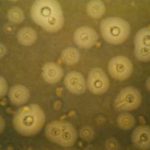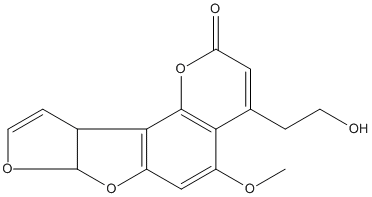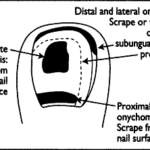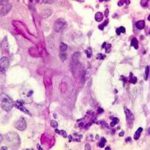Date: 26 November 2013
Secondary metabolites, structure diagram: Trivial name – Parasiticol
Copyright: n/a
Notes:
Species: A. (species not defined)Systematic name: 2H-Furo(3′,2′:4,5)furo(2,3-h)-1-benzopyran-2-one, 7a,10a-dihydro-4-(2-hydroxyethyl)-5-methoxy- 7a,10a-Dihydro-4-(2-hydroxyethyl)-5-methoxy-2H-furo(3′,2′:4,5)furo(2,3-h)-1-benzopyran-2-oneMolecular formulae: C16H14O6Molecular weight: 302.279Chemical abstracts number: 23315-33-5Selected references: Parasiticol: new metabolite from Aspergillus parasiticus. Stubblefield, Robert D.; Shotwell, Odette L.; Shannon, Gail M.; Weisleder, David; Rohwedder, William K. Northern Reg. Res. Lab., Peoria, IL, USA. Journal of Agricultural and Food Chemistry (1970), 18(3), 391-3. CODEN: JAFCAU ISSN: 0021-8561. Journal written in English. CAN 73:23623 AN 1970:423623 CAPLUS
Images library
-
Title
Legend
-
BAL specimen showing hyaline, septate hyphae consistent with Aspergillus, stained with Blankophor
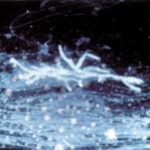
-
Mucous plug examined by light microscopy with KOH, showing a network of hyaline branching hyphae typical of Aspergillus, from a patient with ABPA.
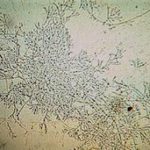
-
Corneal scraping stained with lactophenol cotton blue showing beaded septate hyphae not typical of either Fusarium spp or Aspergillus spp, being more consistent with a dematiceous (ie brown coloured) fungus
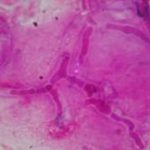
-
Corneal scrape with lactophenol cotton blue shows separate hyphae with Fusarium spp or Aspergillus spp.
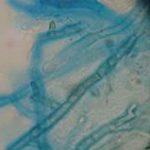
-
A filamentous fungus in the CSF of a patient with meningitis that grew Candida albicans in culture subsequently.
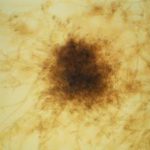
-
Transmission electron micrograph of a C. neoformans cell seen in CSF in an AIDS patients with remarkably little capsule present. These cells may be mistaken for lymphocytes.
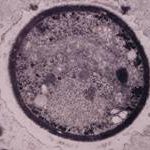
-
India ink preparation of CSF showing multiple yeasts with large capsules, and narrow buds to smaller daughter cells, typical of C. neoformans
